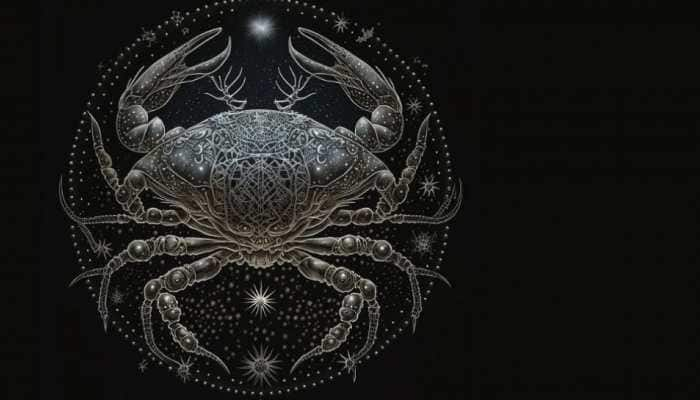The Renaissance Artist: Leonardo Da Vinci
In the history of Renaissance art, Leonardo Da Vinci is one of the most celebrated Italian High Renaissance painters and a prodigiously talented artist.
Trending Photos
)
Aman Kanth
“That figure is most praiseworthy which by its action best conveys the passions of the soul.”
Leonardo Da Vinci
In the history of Renaissance art, Leonardo Da Vinci is one of the most celebrated Italian High Renaissance painters and a prodigiously talented artist, who was gifted with an incomparably enthusiastic mind. Da Vinci was an emblematic Renaissance man, who had a ravenous appetite for knowledge and life. He was not only a distinguished painter, but an architect, anatomist, engineer, musician, sculptor and writer in an equal measure. Unquestionably, Vinci was a multifaceted genius and one of the greatest painters who ever lived on Earth!
As an art form that was entwined with philosophy, architecture, literature, science and theology, Renaissance art was deep-seated in classical learning. The artists believed in the humanist philosophy, wherein relationship with God ceases to be an absolute prerogative of papal authority.
Born on April 15, 1452, Leonardo Da Vinci was an illegitimate child of notary Piero da Vinci and a peasant woman Caterina in Florence. Although not much is known about his early life, in 1466 the young Leonardo became an apprentice to the celebrated Florentine artist Verrocchio, who taught him the nuances of artistry and he got the opportunity to learn the intricacies of metallurgy, drafting, plaster casting, carpentry, leather working, mechanics and various artistic forms including painting, modelling and sculpture making.
Young Leonardo was quick to learn and was so good at his craft that when he collaborated with Verrocchio on ‘Baptism of Christ’, the prodigious apprentice outshined his master and on that day a stunned Verrocchio bid goodbye to painting!
With ever-growing artistic fame, Leonardo became a master at the prestigious Guild of St Luke in 1472 and from 1476 to 1481 worked in his own workshop, while painting the altarpiece of Chapel of St Bernard in 1478 and ‘The Adoration of Magi’; where the latter was commissioned by the Monks of San Donato a Scopeto in 1481. However, with Leonardo leaving Florence for Milan, the work was left unfinished. Inspite of being a successful artist, Leonardo had a dubious reputation when it came to delivery of commissions. Biographers have often cited Leonardo as a homosexual though it is said that Leonardo lived a celibate life. Leonardo Da Vinci was not a recluse and was acknowledged for his idiosyncratic humour; yet, amidst such amiable disposition that earned him everyone’s affection, Leonardo was wary of human society as he wrote:
“Alone you are all yourself, with a companion you are half yourself.”
In Milan, Leonardo was known for his exceptional artistry, which included the renowned ‘Virgin of the Rocks’ and ‘The Last Supper’ apart from undertaking grandiose projects of civil engineering and architecture, while his patron Ludovico was seldom concerned about his magnificent endeavours.
With Milan falling to the French King Louis XII in 1499, Leonardo and his assistants left Milan for Venice and finally settled down in Florence under the patronage of Cesare Borgia. During his stay in Florence, Leonardo continued with his artistry and mesmerized the populace with ‘St John the Baptist’, ‘The Virgin and Child with St Anne’, great frescos of ‘The Battle of Anghiari’ and ‘The Battle of Cascina’ and the renowned ‘Mona Lisa.’
Apart from being a prolific painter, Leonardo was an inexhaustible planner, who had numerous journals complete with detailed sketches of his close observations. As a typical product of Renaissance, Leonardo’s art is a conspicuous example of his varied interest in diverse branches of life - be it flora, fauna, human being, science, nature, war machines, dissections or architecture. Leonardo’s take on science highlights his careful analysis of human anatomy especially topographic composition, which included anatomical traits such as ageing, deformities and musculature and sinews, which were effortlessly translated into immaculate paintings and murals.
Leonardo Da Vinci’s fascination with birds shaped his learning on flight and concepts of flying machines that included an improbable helicopter and a successful hand glider.
Some of the celebrated art works of Leonardo Da Vinci include ‘The Annunciation’ (1472), ‘Ginevra de’ Benci’ (1474), ‘Lady with an Ermine’ (1485), ‘The Last Supper’ (1495-97), ‘The Virgin and Child with St Anne and John the Baptist’ (1499), ‘The Virgin of the Rocks’ (1508), ‘Mona Lisa’ (1503), ‘The Virgin and Child with St Anne’ (1510), ‘Portrait of a Musician’ (1490) and ‘St Jerome’ (1480) to name a few.
Incapacitated by old age and stricken by paralysis of left hand; the genius struggled towards the fag end of his artistic career. In one of his notebooks, Leonardo wrote:
“As a well-spent day brings happy sleep, so life well used brings happy death.”
Leonardo drew his last breath in the presence of good friend Francis I (French king) on 2nd May 1519 at Clos Luce and was buried in Amboise castle’s Saint-Hubert’s Chapel. Certainly, Leonardo’s colossal art work indisputably characterizes the very spirit of Renaissance and its indefatigable pursuit of inclusive knowledge. With Leonardo’s death, the world lost a universal genius.
Stay informed on all the latest news, real-time breaking news updates, and follow all the important headlines in india news and world News on Zee News.
Advertisement
Live Tv
Advertisement







)
)
)
)
)
)
)
)
)
)
